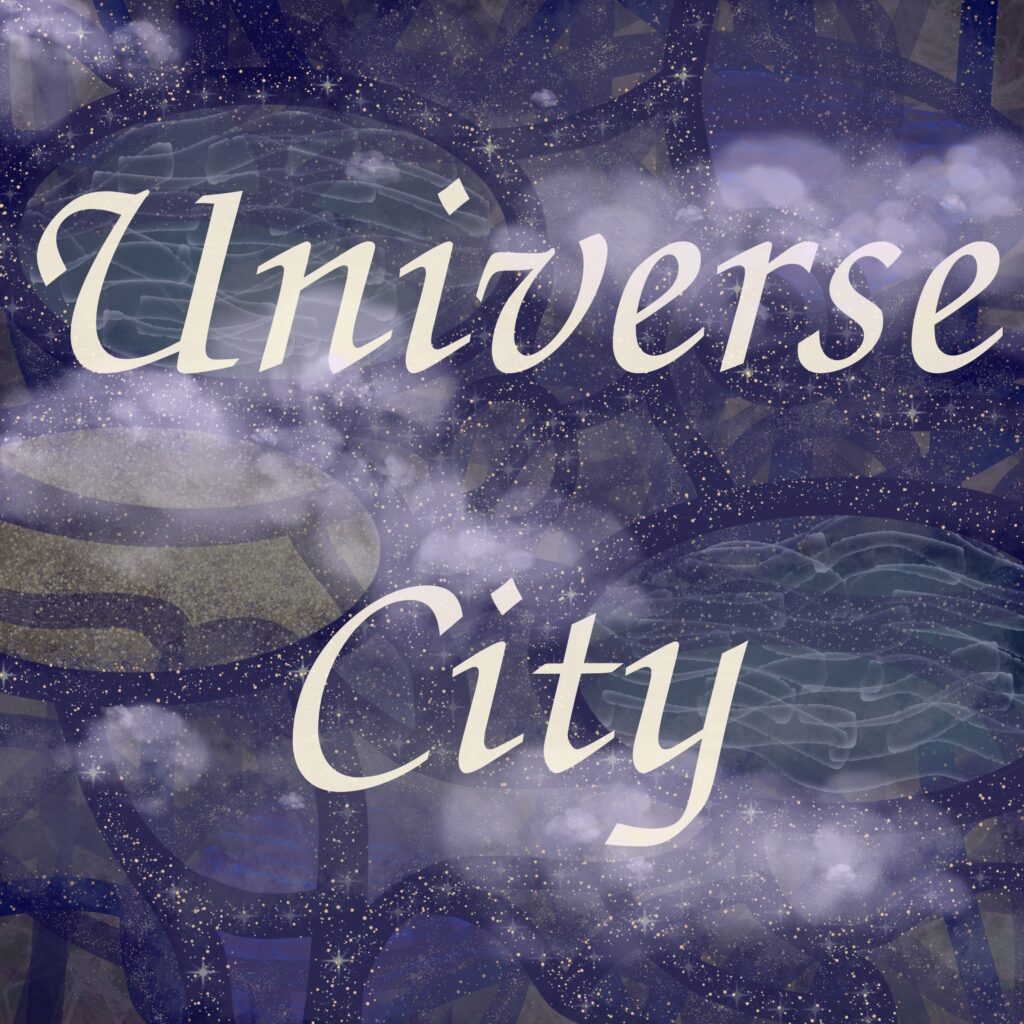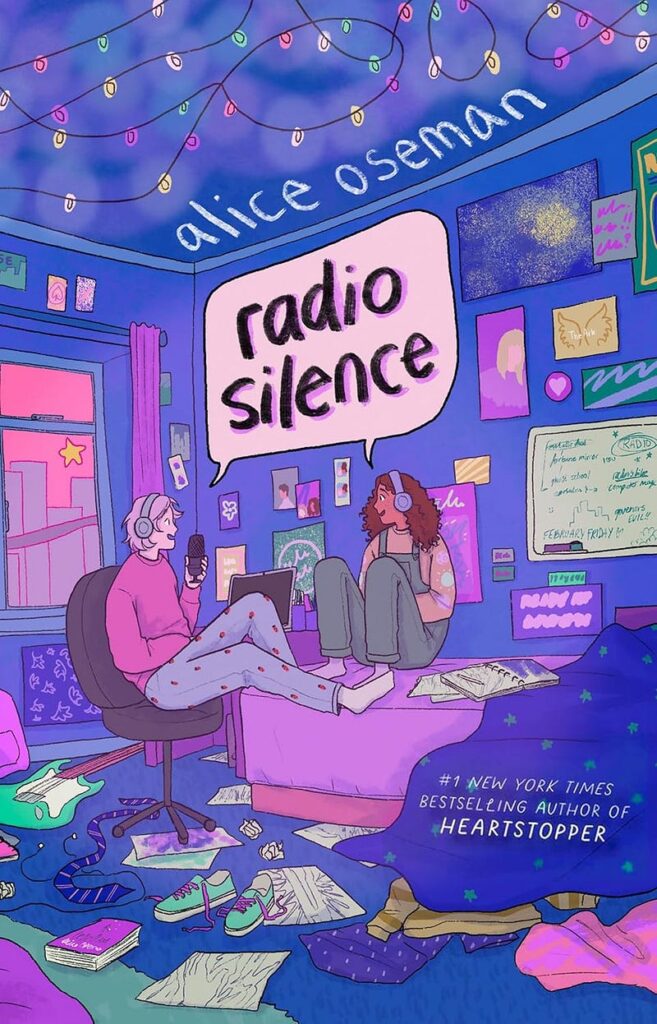
This article is also available on my Medium.
‘Hello,’ a voice speaks into the recorder, sometimes high-pitched, sometimes low, sometimes in the middle, ‘I hope somebody is listening.’
The twenty-sixth century City of the Universe is a metal metropolis, vast and sprawling. Radio Silence, not their real name, wants out. They’re sending messages out via radio, the only technology they can trust.

While the premise is similar to its confessed inspiration, Welcome to Night Vale ‒ and, with over 150 episodes, it certainly shares that show’s longevity ‒ Universe City more closely resembles The Infinite Now in terms of prose and sound, even in the fact that it began on YouTube. After the final chords of the opening song, ‘Nothing Left For Us’, ring out, Radio begins softly telling their story, sometimes with guest voices, but more often alone.
It’s a Message in a Bottle, intended not just for us listeners and potential rescuers, but for one person in particular. We never hear from February Friday, nor do we know much about who they are, but they are the raison d’être for Radio’s messages and we hope they will hear Radio’s voice again someday.
The mystery of whether Radio ever reunites with February is one of many in Universe City, so much so that it can feel like its very own Mystery Box. Who are the Universe City Governors? What is in the Dark Blue Building? Why is it so important to find Vulpes, the Lost Brother?
And then, of course, there are the mysteries surrounding Radio Silence themself, least importantly their real name. Why must they always wear gloves? Who is February Friday?
The only thing that’s clear is that Radio is desperate. In ‘nothing day’, Radio explains ‘Sometimes I exaggerate a bit, just so I have something exciting to say.’ There are inconsistencies about how they came to Universe City and whether February has been there or not. Sometimes it seems like Radio, whilst sending out their broadcasts, is receiving snippets from someone else. Sometimes they wonder whether anyone will ever hear them; other times they’re sure people have heard them, and simply abandoned them.
I wonder sometimes whether you’ve exploded already, like a star, and what I’m seeing is you three million years into the past, and you’re not here any more. How can we be together here, now, when you are so far away? When you are so far ago? I’m shouting so loudly, but you never turn around to see me. Perhaps it is I who has already exploded.
It’s especially clear when it comes to the side characters: Atlas, Chester, Toulose, to name a few. Radio calls them allies or contacts or the ever-ubiquitous ‘old sport’ ‒ anything to avoid calling them friends. They need people, because they can’t survive on their own, but they keep everyone at arm’s length. This might be because they’re used to doom befalling people they get close to, or because they’re worried about spies.
Radio is doing everything they can to escape Universe City. They’re bending over backwards to survive. Hoping the Governors will let them live, saying anything to get listeners to come looking. They’re waiting for rescue, but don’t let anyone close enough to save them.
It is bleak, and well encapsulated by its opening number.
There’s nothing left for us any more
Why aren’t you listening?
Why aren’t you listening to me?
There’s nothing left
The song is soft and melancholic, the melody of Radio’s yearning. After all, when there’s nothing left for us, what do we do?
What keeps listeners hooked is that there’s one thing they know about Radio that Radio doesn’t: despite the bleakness of their situation, they haven’t given up hope. Sometimes that hope is expressed in defiance. Sometimes, as in ‘the end’, it seems to have left Radio completely.
But always, it’s expressed in the simple fact that Radio is broadcasting at all. ‘Long ago I was afflicted with a terrible predisposition to never say a word,’ they say in the very first episode ‒ but hundreds of episodes later, they’re still here. They’re still talking into that radio, hoping somebody is listening.
I can take a little beating now and then. I’m a tough one. I’m a star. I’m steel-chested and diamond-eyed. Cyborgs live and then they break, but I’ll never break. Even when my bone drifts over the City walls, I’ll be living and I’ll be flying, and I will wave and laugh.
The hope is what keeps audiences going. It has to be, because Universe City’s premise depends upon it. The show, as a story, is doomed in a certain way, because we know it will end when Radio flees Universe City and reunites with February Friday. It has to. If it’s still going, then that means Radio is still trapped, missing the person they care about most.
But Radio persists. So we do, too. After all, the fight for freedom is always a long and arduous battle. It is hope that sees us through.
When there’s nothing left for us, we will make something new.
This article was written as an April Fools’ Day joke. Universe City is the fictional audio drama at the heart of the book Radio Silence by Alice Oseman.
Excerpts from the audiobook, containing transcripts of certain episodes, are available on Oseman’s YouTube; the playlist is embedded below. A fan has also taken the liberty of putting the excerpts on Spotify.
I made the cover art for this article. ‘touloser’ is the online alias of Frances Janvier, the protagonist of the novel.
Postscriptum:

If you’ve made it to the bottom of the article, I really do recommend Radio Silence. It is a story that means a lot to me. It discusses how the education system can break the people in it, abusive family dynamics and grappling with your sexual orientation in such a kind manner. To that, Frances Janvier’s inner voice was the first time I felt like I was actually hearing myself in a story. If you want to borrow my copy, there isn’t a single page that isn’t highlighted, annotated or dog-eared. I have read the chapter ‘Fuck You All’ and cried more times than I can count.

Leave a Reply